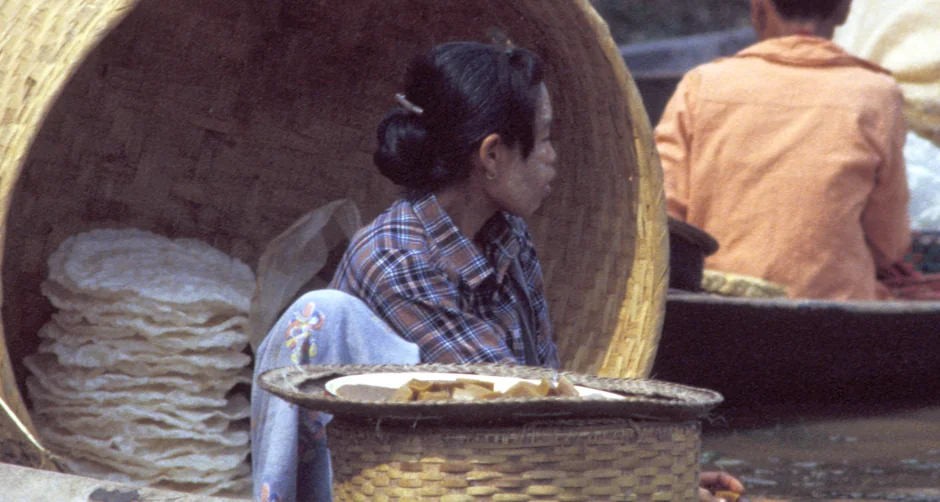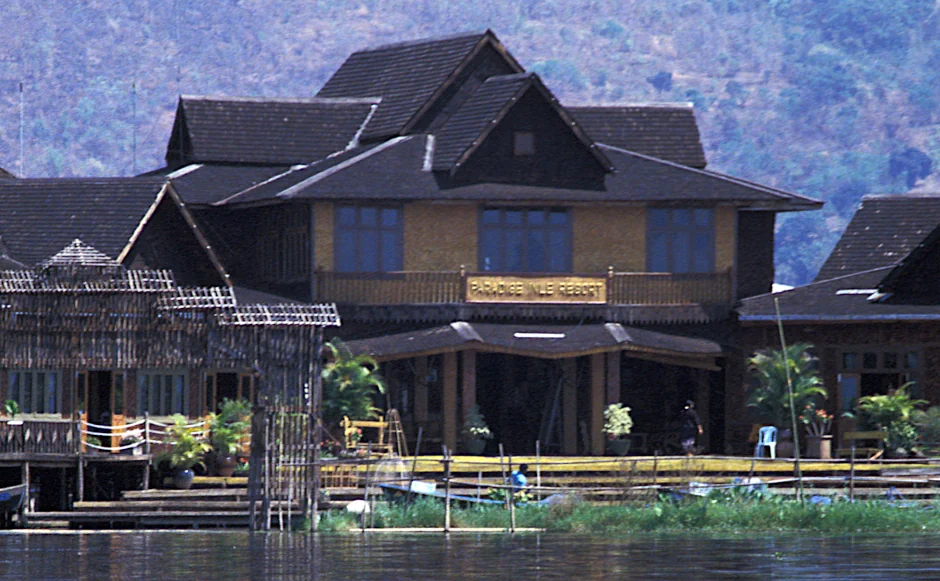The Indigenous Intha People
Ethnonyms: Inntha, Innthar, Insa, Naung Ma Countries inhabited: Burma (Myanmar) Language family: Tibeto-Burman Language branch: Southern Burmish
Almost all of the 100,000 speakers of the Intha language live in Shan State, Burma (Myanmar). While most of them live around Inle Lake, a few live literally on that freshwater lake itself. Covering an area of 116 square kilometers, the lake is home to many species of fish, including some that are found nowhere else in the world.
This situation is what attracted the Intha people to settle here centuries ago. Having done so, they adapted to the local conditions and created unique indigenous knowledge. A divergence from Burmese, their language names themselves as "people living by the lake" — although they're often called "sons of the lake." Unlike their religion (Buddhism), their diet has also diverged from that of other Shan State peoples. Not surprisingly, fish features prominently in their cuisine.
They are best known to outsiders for an adaptation to a surface condition of the lake. The water is largely covered by floating plants and reeds which makes it difficult to spot fish. This led to the invention of a custom fishing technique in which a leg is used to row the boat while standing. The sight has become so popular with tourists that some Intha men supplement their income by posing for photos.
Not all fishing is done this way, however. On parts of the lake where the view is unobstructed, fish can be speared from a crouching position.
Inle Lake is not just the backbone of the fishing industry; it supports a large part of the entire Intha economy. While most agriculture takes place onshore, the Intha have also constructed floating gardens offshore to grow fruits, vegetables and flowers. But even the onshore economy is supported by the lake. The man bathing his water buffalos pictured below is a common sight.
So too are floating markets. The one pictured below is aimed at tourists — Inle Lake is among Burma's most popular tourism destinations. Locals offer trinkets and locally-made jewelry for sale. Aside from tourism these markets are stocked mostly with food. The second photo below shows a lady in a "fast food rice cake boat."
Transport among Intha communities also takes place primarily on the lake. Occasional festivals, religious ceremonies and competitions are held on the lake. And it was even the sight of a flotilla protest against the military coup last year.
When they're not involved in these activities on the lake, many Intha are at home in houses that sit over the lake. Because its water level rises seasonally by a meter or so, those houses are built on stilts. Similar buildings can be found on and around the lake that are not homes. Instead they are workshops. Like many young Intha women, the one pictured below makes jewelry in one of these workshops.
In a second workshop, pictured below, another young Intha woman learns how to weave as part of an apprenticeship program.
When Intha men are found in such buildings, they are often blacksmiths or silversmiths. With so many boats plying the lake every day, there is a constant high demand for spare parts for repair work. Intha men have acquired blacksmithing skills to satisfy that demand. Silversmithing is a more traditional Intha craft and supplies mainly the local tourist demand these days.
Until the Covid-19 pandemic and then the military coup, Inle Lake was a high-demand tourism destination due to its beauty and tranquility as well as the Intha people. But tourism — along with unsustainable agricultural practices and climate change — have recently begun to pose an ecological threat to the lake. Its surface area is decreasing and its suitability to support life is deteriorating. A few years ago it was designated a UN World Network Biosphere Reserve and efforts are underway to reverse this decline.
Photography copyright © 1999 - 2025, Ray Waddington. All rights reserved. Text copyright © 1999 - 2025, The Peoples of the World Foundation. All rights reserved.

Waddington, R. (2022), The Indigenous Intha People. The Peoples of the World Foundation. Retrieved December 20, 2025, from The Peoples of the World Foundation. <https://www.peoplesoftheworld.org/text?people=Intha>












